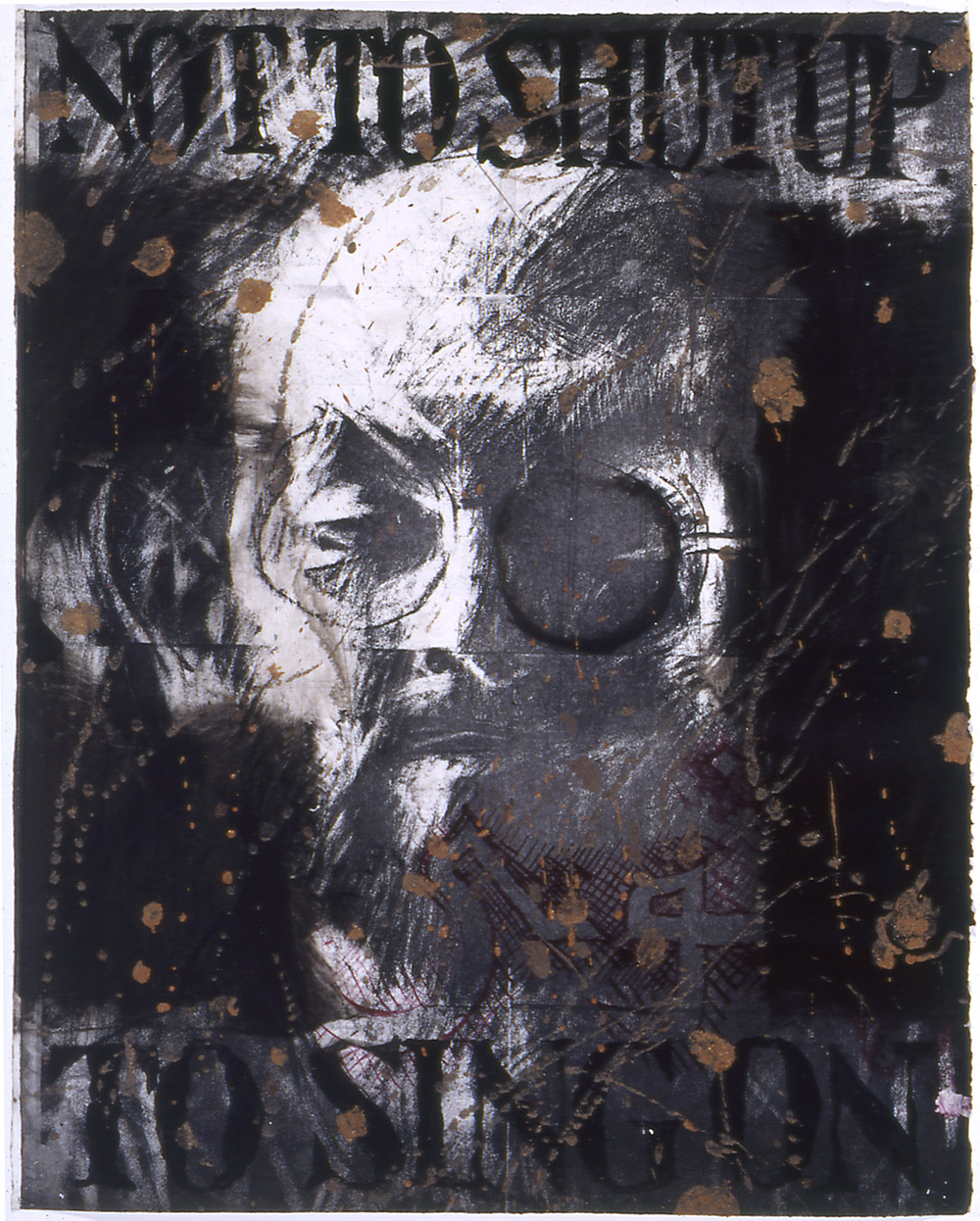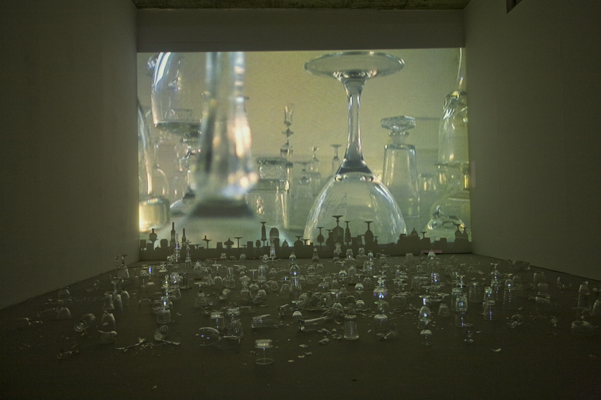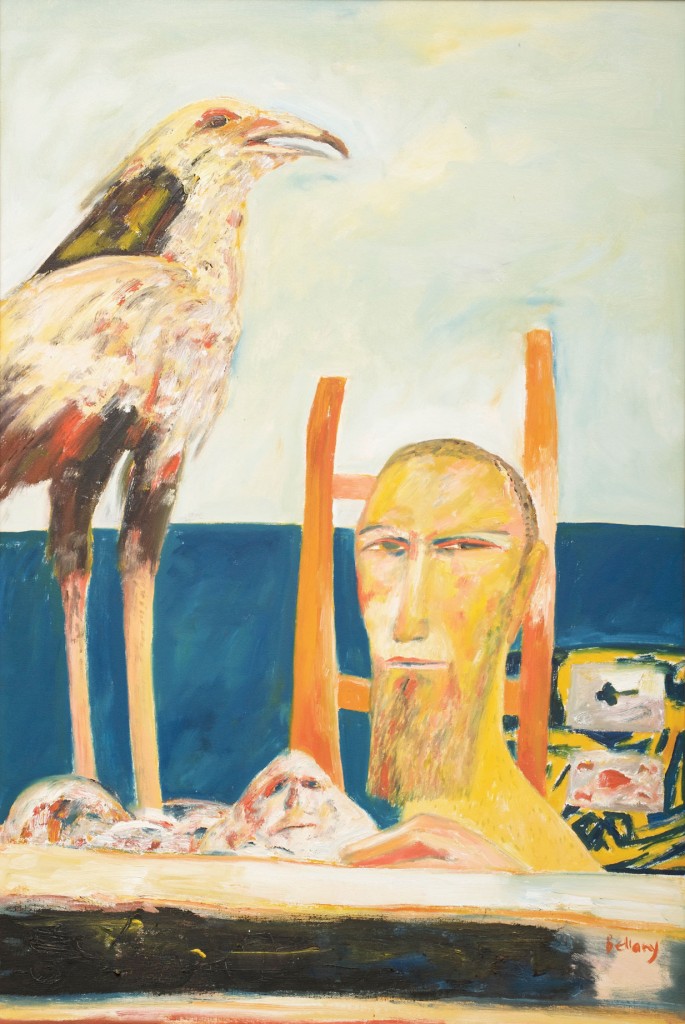Old fossils
spotted down on Watchet’s quayside!
‘Jurassic: Triassic: a Geological Journey’ currently
on at ‘Contains Art’ in Watchet is an exhibition of drawings, paintings, felt
and mixed media work ‘inspired by the strata, rock formations and landscapes of
the coastline from Doniford to Blue Anchor’. Featuring work by six local
artists (four of whom also have container-based studios on site alongside this
exhibition) Mel Degan, Lucy Lean, Angie Wood, Leo Davey, Sue Lowe and Alison
Jacobs.
Speaking of
ancient history, it has been almost two years since I last visited Watchet when
I attended the ‘Contains Art’ grand opening on the sixth of July 2013*! What
kept me away for so long?! For those not in the know, ‘Contains Art’ is located
on Watchet’s quayside in the form of three large beautiful blue shipping
containers that have been transformed into studio spaces and an exhibition
space for artists. A visit to these unique and imaginative studios and
exhibition space was clearly long overdue and so on May’s last bank holiday Monday
I paid them a visit.
 |
Leo Davey
|
The practicalities of an artist working and exhibiting in a shipping container is no mean feat, the spaces are long and relatively narrow (and probably quite cold in the winter months), but as ‘Contains Art’ continues to prove the resilience of artists is such that we are prepared to make it just about anywhere. Printmaking, sculpture and painting all happen on site in these seemingly impractical containers in a real working example of the innovativeness of creative practitioners. It is quite inspiring and has already become a successful addition to the contemporary arts landscape in Somerset with ambitions for future expansion in the pipeline.
 |
| Sue Lowe 'Helwell Layers I' |
The small but geologically formed exhibition
currently on until Sunday 31st May is an example of some of the local
talent on offer and brings together some varied and imaginative approaches to
the theme of the local Jurassic/Triassic coastline. As you may expect to find
in an exhibition about geology there is a lot of layering going on in the work!
Printmaker, Sue Lowe produces collagraphs layered with chine collé in
totem-like columns. The colours and layering Lowe uses create a sense of the
maritime, salt/minerals through their depth, texture and wear. Minehead based
artist, Leo Davey provides a series of watercolour/ink based drawings depicting
the strata and layering of the coastal rock formations. The longer you spend
looking at stone the more you notice the amount of colours and tones that seem
to change in different light and weather conditions. Davey’s drawings seem to
pick up on this being extremely colourful becoming stylised and almost
pattern-like in their appearance. Elsewhere Lucy Lean felts undyed natural
fleece into tightly packed, dense forms mimicking the shapes and layering of
fossils or rock. It is an interesting choice of material [fleece] as it’s soft,
more malleable properties have parallels to geological processes of squashing and compressing of layers of rock and sediment.
 |
| Lucy Lean |
Angie Wood and
Alison Jacobs both create their own interpretations in paint inspired by the cliffs and coastal
landscape; Wood through stained/layered acrylic paintings which seem to
celebrate the roughness and texture of the canvas surface they’re painted on
creating earthy, moody and contemplative scenes inspired by the local cliffs
but could also connect to a broader reaching sense of our relationship to space, the ground and terra firma. Jacobs, another accomplished painter depicts coastal landscapes with vivid, expressive colours and energy, some of which have been created on an iPad in a sort of David Hockney style experimental playfulness. They are slightly detracted from, however, in my opinion by another of her works (coincidently my favourite overall in this exhibition) made entirely from used artist’s paint brushes. Titled ‘Fossil’ (pictured) as the name would suggest, the brushes are arranged together in rows taking the curved form of an ammonite fossil, or as I saw it mimicking stratum layers. It is possibly the most conceptual piece in the show, but is very cleverly affective and brilliantly observed at communicating the same subject matter in the paintings but in an altogether wittier way.
 |
| Angie Wood |
 |
| Alison Jacobs 'Fossil' |
In true cabinet of
curiosities style ‘Contains Art’ is full of many wonders and diehard fossil
hunters fear not, for there are also a few actual fossils in this exhibition as
well as alabaster and various stones! ‘Jurassic:
Triassic: a Geological Journey’ is a vibrant exhibition that is only limited by
its deserving to expand into a bigger container!







